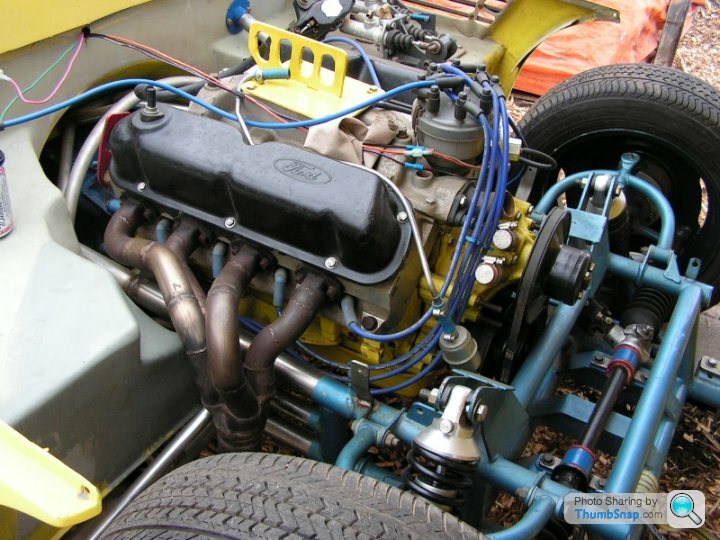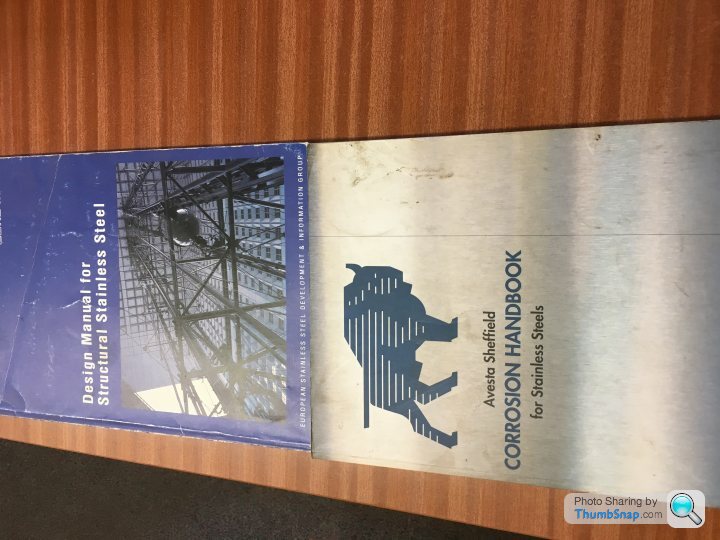Curious - is this a stainless chassis ?
Discussion
I've seen that picture before, and wondered that myself at that time.
But yesterday I came across this one, a 1984 TVR 350i FHC V8 and there is a picture of the underside,
which looks it has no paint at all on it...that must be stainless or ?
if it is stainless and original...than pretty rare...and a bargain.

https://www.carandclassic.co.uk/car/C1045396
But yesterday I came across this one, a 1984 TVR 350i FHC V8 and there is a picture of the underside,
which looks it has no paint at all on it...that must be stainless or ?
if it is stainless and original...than pretty rare...and a bargain.

https://www.carandclassic.co.uk/car/C1045396
Penelope Stopit said:
If a stainless steel chassis suffered any flex it may not flex back to its original position
What are other peoples thoughts?
Same with mild steel ?What are other peoples thoughts?
Stainless is susceptible to different types of corrosion to mild steel. Where that chassis has been modified to include stainless, is a breeding ground for stainless related corrosion if used during the winter. It an be mitigated by adequate coating being applied, seems like option that was discounted
Don't think it was the smartest modification.
Penelope Stopit said:
V6 Pushfit said:
It won’t flex in the same way at all so a chassis designed for mild steel needs redesign for stainless
Thank you
TVRMs said:
Both materials have different strengths so will behave differently. A stainless chassis will not see any material loss during its life, a corrosion allowance would however need to be considered for mild steel. Not sure there would be much difference other than wall thickness of the pipework and the thickness of any gussets - both to compensate for corrosion and material strength. 
The problem with the readily available grades of stainless tubular products, 304 & 316 is the stress cracking of the material in the heat affected zones, ie local to welds.
I remember looking under the SEAC racer that has a stainless chassis for a brief period, the welds looked reasonable, not great but ok, but it kept cracking local to the weld area.
We used to see it a lot on pump pipe work in the paper industry where you could get vibration from the pumps and elevated temperatures the pipes had to be 316 to resist corrosion but would crack in the strangest places.
What doesn't add up to me is that if it is a local repair, why use stainless? Surely welding stainless to mild steel adds difficulty and risk of weld failure for no real benefit 
If the chassis is full stainless beneath the blue, it would be interesting to know more on how it has performed and the type of stainless used for all the reasons above reasons.
Moto

If the chassis is full stainless beneath the blue, it would be interesting to know more on how it has performed and the type of stainless used for all the reasons above reasons.
Moto
It always gives me a giggle this pre-occupation with corrosion resistance..... We strip down 40 year old cars and then have a bit of a fettle with either some new tubes or a totally new chassis..... How long do you want the bloody things to last..... If I have to do mine again when I am 80 so be it 
N.

N.
Dollyman1850 said:
It always gives me a giggle this pre-occupation with corrosion resistance..... We strip down 40 year old cars and then have a bit of a fettle with either some new tubes or a totally new chassis..... How long do you want the bloody things to last..... If I have to do mine again when I am 80 so be it 
N.
But the Diesel oil fumes from yours will keep your chassis corrosion free. 
N.

Gassing Station | TVR Classics | Top of Page | What's New | My Stuff





